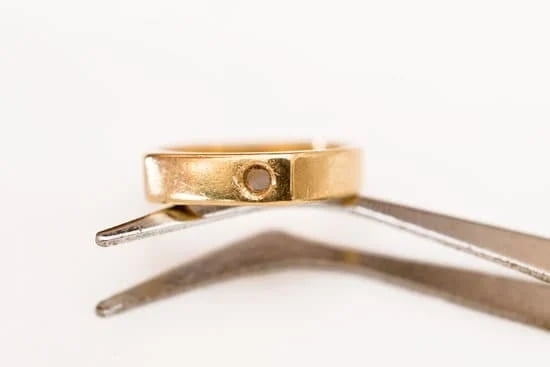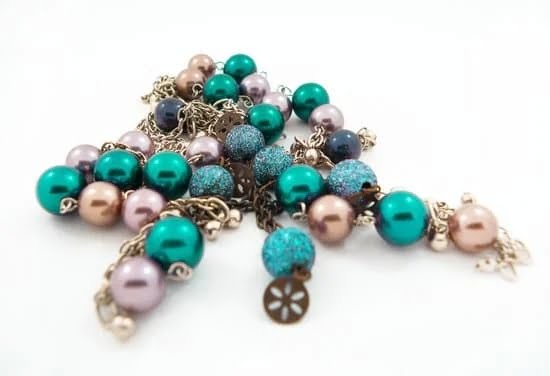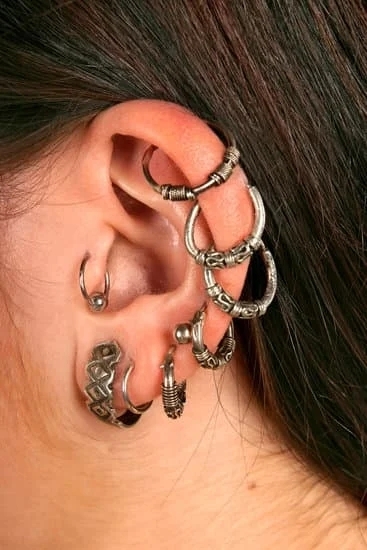Gold jewelry has long been prized for its timeless beauty and alluring shine. However, one common issue that many gold jewelry enthusiasts face is tarnishing. This raises the question: what type of gold jewelry doesn’t tarnish? In this article, we will explore the different types of gold and delve into specific options that are less prone to tarnishing, providing a comprehensive guide for those seeking non-tarnishing gold jewelry.
When it comes to gold jewelry, there are various types of gold used, including 24K, 18K, 14K, as well as gold-filled or gold-plated. Each type has its unique properties and level of susceptibility to tarnishing. Understanding these differences can help consumers make informed decisions when purchasing their desired pieces.
Tarnishing can be caused by various factors such as exposure to chemicals, moisture, and skin oils. These elements react with the metal and cause it to darken or lose its luster over time. It is important to consider these factors when choosing the right type of gold jewelry that resists tarnishing. Solid gold, gold vermeil, and gold-filled jewelry are some options known for their durability and resistance to tarnishing, which we will explore in detail in this article.
Types of Gold
When it comes to gold jewelry, there are various types of gold used in the making of these beautiful pieces. Understanding the differences between these types can help you make an informed decision when purchasing gold jewelry. Here are some of the most common types of gold used in jewelry:
- 24K Gold: This is the purest form of gold, with a composition of 99.9% gold. While 24K gold doesn’t tarnish, it is also very soft and not suitable for everyday wear due to its malleability.
- 18K Gold: This type of gold contains 75% pure gold and is often alloyed with other metals such as copper or silver. It has a rich color and is more durable than 24K gold, making it a popular choice for wedding and engagement rings.
- 14K Gold: With a composition of 58.3% pure gold, 14K gold is more affordable than higher karat options while still offering durability and a beautiful appearance. It is less prone to tarnishing compared to higher karat gold.
- Gold-Filled or Gold-Plated Jewelry: These types of jewelry involve a layer of gold bonded to a base metal. While they can offer the look of real gold at a more affordable price, they are more susceptible to tarnishing over time compared to solid gold options.
Understanding the differences between these types of gold can help you choose the best option for your lifestyle and budget. If you’re looking for non-tarnishing gold jewelry, solid gold, or certain specific processes like vermeil or filled are good choices that offer durability and resistance to tarnishing over time.
What Causes Tarnishing
Gold jewelry is a classic and timeless accessory that has been prized for centuries. Its lustrous shine and elegant appeal make it a popular choice for many people. However, one common issue with gold jewelry is tarnishing, which can detract from its beauty. Tarnishing is caused by various factors such as exposure to chemicals, moisture, and skin oils.
Chemicals like chlorine can react with the metal in gold jewelry, causing discoloration and tarnishing. Additionally, contact with lotions, perfumes, and other beauty products can also contribute to tarnishing. Moisture from water or sweat can further exacerbate the problem, especially when the jewelry is not properly dried after exposure.
Skin oils are another culprit when it comes to tarnishing gold jewelry. The natural oils produced by our skin can interact with the metal in the jewelry and create a film that dulls its appearance over time. Understanding these factors is crucial in knowing how to prevent tarnishing and maintain the luster of gold jewelry.
It’s important to note that certain types of gold jewelry are less prone to tarnishing than others. Solid gold jewelry, gold vermeil, and gold-filled pieces are known for their durability and resistance to tarnishing. By choosing these options and following proper care tips, you can enjoy stunning gold jewelry that maintains its shine for years to come.
| Types of Gold Jewelry | Tarnish Resistance |
|---|---|
| Solid Gold | Very resistant |
| Gold Vermeil | Durable option |
| Gold-Filled | Non-tarnishing choice |
Gold Jewelry That Doesn’t Tarnish
When it comes to gold jewelry, one common concern for many people is tarnishing. The good news is that there are specific types of gold jewelry that are less prone to tarnishing, ensuring a long-lasting and lustrous piece that can be treasured for years to come. Solid gold, gold vermeil, and gold-filled jewelry are some options that provide the beauty of gold without the worry of tarnishing.
Solid gold jewelry, which is made from pure gold mixed with other metals for durability, is a great choice for those looking to invest in non-tarnishing pieces. Due to its high purity, solid gold is less likely to react with moisture or chemicals, making it resistant to tarnishing. It may require occasional cleaning and maintenance but will maintain its shine over time.
Another option for non-tarnishing gold jewelry is gold vermeil. Gold vermeil consists of a thick layer of real gold plated over sterling silver, providing the look and feel of solid gold at a more affordable price point. This type of jewelry offers the elegance of gold without the risk of tarnishing, making it a popular choice for those seeking long-lasting beauty.
Gold-filled jewelry is also known for its non-tarnishing properties. This type of jewelry involves bonding a thick layer of real gold to a base metal core, creating a durable and tarnish-resistant piece. With proper care and maintenance, gold-filled jewelry can retain its luster and shine, offering an attractive and affordable alternative to solid gold.
| Types | Non-Tarnishing Properties |
|---|---|
| Solid Gold | High purity makes it less likely to react with moisture or chemicals |
| Gold Vermeil | A thick layer of real gold plated over sterling silver provides long-lasting beauty |
| Gold-Filled Jewelry | Bonding process creates durable and tarnish-resistant pieces |
Solid Gold Jewelry
When it comes to gold jewelry, solid gold is often the go-to choice for many individuals due to its durability and resistance to tarnishing. Solid gold jewelry is made entirely of the precious metal, without any other metals mixed in, making it less susceptible to tarnishing compared to other types of gold. Here are some key benefits of solid gold jewelry and why it is a great option for those looking for non-tarnishing gold jewelry:
Benefits of Solid Gold Jewelry
- Timeless Beauty: Solid gold has a rich and luxurious appearance that never goes out of style, making it a timeless choice for jewelry.
- Durability: Solid gold is highly resistant to scratches, dents, and tarnishing, making it suitable for everyday wear.
- Hypoallergenic: Pure gold is less likely to cause skin irritation or allergic reactions, making it ideal for individuals with sensitive skin.
Why It Is Less Likely to Tarnish
Solid gold jewelry is less likely to tarnish due to its purity. Since it does not contain any base metals that can react with external substances, such as moisture or chemicals from beauty products, solid gold maintains its luster without the risk of tarnishing.
In addition to being resistant to tarnishing, solid gold jewelry can be easily maintained by regular cleaning with a soft cloth and mild soap. With proper care, solid gold pieces can last a lifetime without losing their shine and beauty. If you’re looking for non-tarnishing gold jewelry that will stand the test of time, solid gold pieces are an excellent choice.
Gold Vermeil
Gold vermeil jewelry has gained popularity in recent years as a more affordable yet high-quality option for those seeking non-tarnishing gold jewelry. The process of creating gold vermeil involves coating sterling silver with a thick layer of gold, making it an attractive and durable choice for jewelry. This section will explore what gold vermeil is and why it is a great option for those looking for non-tarnishing gold jewelry.
### What is Gold Vermeil?
Gold vermeil, pronounced “ver-may,” refers to sterling silver that has been coated with a thick layer of gold. To be considered vermeil, the gold layer must be at least 2.5 microns thick and the base metal must be sterling silver.
This makes it a more accessible option for those who want the look of solid gold without the hefty price tag. Gold vermeil jewelry often features intricate designs and precious gemstones, adding to its appeal as an alternative to solid gold jewelry.
One of the main reasons why gold vermeil is highly sought after is its resistance to tarnishing. The thick layer of gold acts as a protective barrier, preventing the underlying sterling silver from coming into contact with substances that cause tarnishing, such as moisture and skin oils.
Additionally, since it is made with sterling silver as the base metal, gold vermeil is hypoallergenic, making it suitable for those with sensitive skin. Its affordability also makes it an excellent choice for individuals who want high-quality non-tarnishing gold jewelry without breaking the bank.
While gold vermeil jewelry is resistant to tarnishing, proper care and maintenance are still essential to ensure its longevity and luster. It is recommended to avoid exposing gold vermeil jewelry to harsh chemicals, abrasive materials, or prolonged moisture. To clean gold vermeil pieces, simply use a soft cloth or brush with mild soap and warm water to gently remove any dirt or residue.
Storing them in a dry place when not in use can also help prevent unnecessary exposure to moisture. With proper care, gold vermeil jewelry can maintain its beautiful appearance for many years to come.
With its attractive appearance, durability, and affordability, it’s no wonder that gold vermeil has become a popular choice for those seeking non-tarnishing gold jewelry. Whether you’re looking for elegant earrings, timeless necklaces, or statement rings, there’s no shortage of options when it comes to this versatile and stylish type of jewelry.
Gold-Filled Jewelry
Manufacturing Process
The manufacturing process of gold-filled jewelry involves bonding a thick layer of gold to a base metal such as brass or copper. Unlike gold plating, which uses a thin layer of gold that can wear away over time, the bonding process used in creating gold-filled jewelry results in a more durable and long-lasting product.
The layer of gold on gold-filled jewelry is significantly thicker than that of traditional gold-plated pieces, making it less prone to tarnishing and offering greater longevity.
Durability and Non-Tarnishing Qualities
One of the primary advantages of choosing gold-filled jewelry is its durability. The thick layer of bonded gold makes these pieces resistant to tarnishing, chipping, and fading, even with regular wear. This makes gold-filled jewelry an ideal option for everyday accessories that are exposed to environmental elements and daily activities. Additionally, the non-tarnishing qualities of this type of jewelry ensure that it maintains its beautiful appearance without requiring frequent polishing or maintenance.
Cost-Effective Alternative
In addition to its non-tarnishing properties, the affordability of gold-filled jewelry makes it an attractive alternative to solid gold pieces. With proper care, gold-filled jewelry can last for many years without losing its shine or color, providing an economical option for those seeking high-quality, long-lasting accessories. The combination of durability, non-tarnishing qualities, and cost-effectiveness makes gold-filled jewelry an appealing choice for individuals looking for beautiful and practical adornments.
Care Tips
Gold jewelry is a timeless and classic accessory that adds elegance and sophistication to any outfit. However, one common issue that many individuals face with their gold jewelry is tarnishing. Tarnishing can occur due to exposure to chemicals, moisture, and skin oils, causing the gold to lose its luster and shine. In this section, we will discuss helpful tips on how to care for and maintain non-tarnishing gold jewelry to ensure its longevity and luster.
Proper storage is key when it comes to maintaining the beauty of non-tarnishing gold jewelry. It is important to store your gold pieces in a dry and air-tight container or zip-top bag when they are not being worn. This helps prevent exposure to moisture and air, which can accelerate tarnishing. Additionally, storing each piece separately in a soft cloth or jewelry pouch can prevent scratching and tangling.
Regular cleaning is essential for keeping non-tarnishing gold jewelry looking its best. To clean solid gold, vermeil, or gold-filled jewelry, use a mild soap and warm water solution. Gently scrub the jewelry with a soft-bristled brush or cloth, then rinse thoroughly with water and pat dry with a clean towel. Avoid using harsh chemicals or abrasive materials as they can damage the finish of the gold.
Finally, it is crucial to avoid exposing non-tarnishing gold jewelry to harsh chemicals such as chlorine, bleach, or ammonia. These chemicals can cause discoloration and tarnishing of the metal. It is also recommended to remove gold jewelry before swimming or engaging in activities that may expose it to sweat or oils from the skin. By following these care tips, you can ensure that your non-tarnishing gold jewelry retains its beauty and luster for years to come.
Conclusion
In conclusion, when it comes to selecting gold jewelry that doesn’t tarnish, there are several options to consider. Solid gold jewelry, such as 24K or 18K gold, is a timeless choice known for its durability and resistance to tarnishing.
Gold vermeil, which consists of a thick layer of gold over sterling silver, offers the look of solid gold at a more affordable price point while being less prone to tarnishing than other types of gold-plated jewelry. Additionally, gold-filled jewelry is a durable option made by bonding a layer of gold to a base metal core, providing long-lasting luster without the risk of tarnishing.
It’s important to note that proper care and maintenance play a crucial role in preventing tarnishing and preserving the beauty of non-tarnishing gold jewelry. To ensure longevity and luster, it’s recommended to store gold jewelry in a dry environment and avoid exposing it to harsh chemicals or moisture. Regular cleaning with a soft cloth and mild soap can also help remove any buildup that may dull the shine of the jewelry.
Ultimately, whether you opt for solid gold, gold vermeil, or gold-filled jewelry, understanding the factors that contribute to tarnishing and following best practices for care will help you enjoy your non-tarnishing gold jewelry for years to come. By choosing the right type of gold and providing proper maintenance, you can continue to admire the enduring beauty of your favorite pieces without worrying about tarnish detracting from their allure.
Frequently Asked Questions
What Kind of Gold Jewelry Won’t Tarnish?
Gold jewelry that won’t tarnish typically includes pieces made of 14k or 18k gold, as the higher gold content makes them less prone to tarnishing. Additionally, gold-filled or gold-plated jewelry may also be less likely to tarnish compared to pure gold pieces.
What Gold Is Least Likely to Tarnish?
Among the different types of gold, 18k gold is generally considered the least likely to tarnish due to its higher purity. The higher percentage of pure gold in 18k gold means that it is more resistant to corrosion and oxidation, which are the primary causes of tarnishing in jewelry.
Does 14k or 18k Gold Tarnish?
Both 14k and 18k gold are not immune to tarnishing, but they are significantly less prone to it compared to lower karatages. Tarnishing may still occur over time due to exposure to certain chemicals, moisture, or even natural oils from the skin.
However, with proper care and maintenance, both 14k and 18k gold jewelry can retain their luster and shine for a long time.

Welcome to my jewelry blog! My name is Sarah and I am the owner of this blog.
I love making jewelry and sharing my creations with others.
So whether you’re someone who loves wearing jewelry yourself or simply enjoys learning about it, be sure to check out my blog for insightful posts on everything related to this exciting topic!





